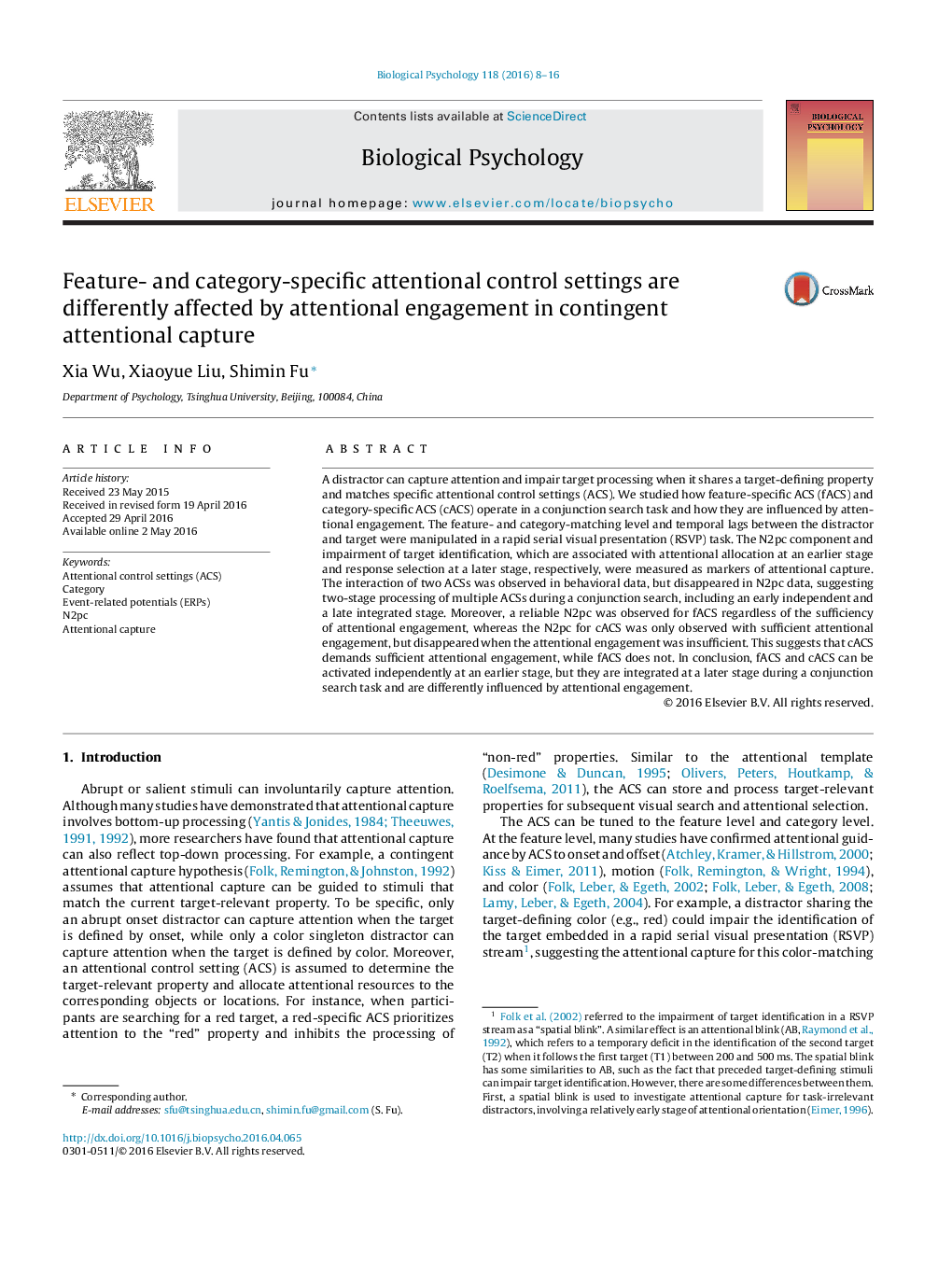| Article ID | Journal | Published Year | Pages | File Type |
|---|---|---|---|---|
| 7278397 | Biological Psychology | 2016 | 9 Pages |
Abstract
A distractor can capture attention and impair target processing when it shares a target-defining property and matches specific attentional control settings (ACS). We studied how feature-specific ACS (fACS) and category-specific ACS (cACS) operate in a conjunction search task and how they are influenced by attentional engagement. The feature- and category-matching level and temporal lags between the distractor and target were manipulated in a rapid serial visual presentation (RSVP) task. The N2pc component and impairment of target identification, which are associated with attentional allocation at an earlier stage and response selection at a later stage, respectively, were measured as markers of attentional capture. The interaction of two ACSs was observed in behavioral data, but disappeared in N2pc data, suggesting two-stage processing of multiple ACSs during a conjunction search, including an early independent and a late integrated stage. Moreover, a reliable N2pc was observed for fACS regardless of the sufficiency of attentional engagement, whereas the N2pc for cACS was only observed with sufficient attentional engagement, but disappeared when the attentional engagement was insufficient. This suggests that cACS demands sufficient attentional engagement, while fACS does not. In conclusion, fACS and cACS can be activated independently at an earlier stage, but they are integrated at a later stage during a conjunction search task and are differently influenced by attentional engagement.
Related Topics
Life Sciences
Neuroscience
Behavioral Neuroscience
Authors
Xia Wu, Xiaoyue Liu, Shimin Fu,
